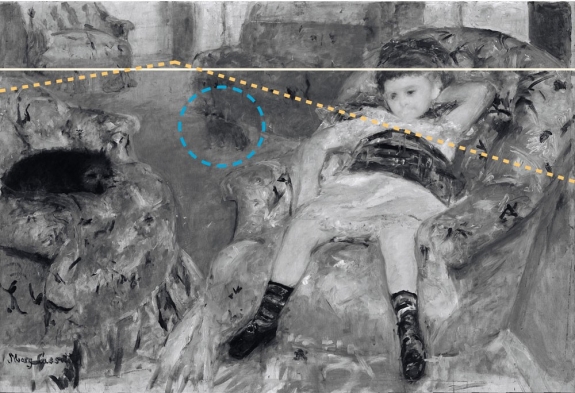In a letter to the French art dealer Ambroise Vollard, Cassatt wrote that Degas not only advised her as she painted Little Girl in a Blue Armchair, but even worked on the background. Recent cleaning, restoration, and technical analysis have been instrumental in identifying Degas’s role. The paint surface in the corner of the room beyond the furniture shows evidence of having been scraped or rubbed, a technique used often by Degas but only rarely by Cassatt. Infrared imaging, moreover, reveals that Cassatt had initially used a horizontal line to mark the edge of the floor and a single back wall that was parallel to the picture plane. Degas made the space more dynamic by adding the corner, creating a junction of two walls and thus introducing a diagonal that expanded the room spatially. The use of such wide angle diagonals to define interior architecture was common in Degas’s work, but unprecedented in Cassatt’s.
To accommodate the new corner, Cassatt had to adjust her composition. She repositioned the armless couch in the background to align with the now sloping wall. She also reconsidered the placement of the dog. While it now rests comfortably on a chair, the infrared image indicates that she had tried placing it on the floor, seated in front of the couch. Eventually, she painted it out there and set it back on the chair.
